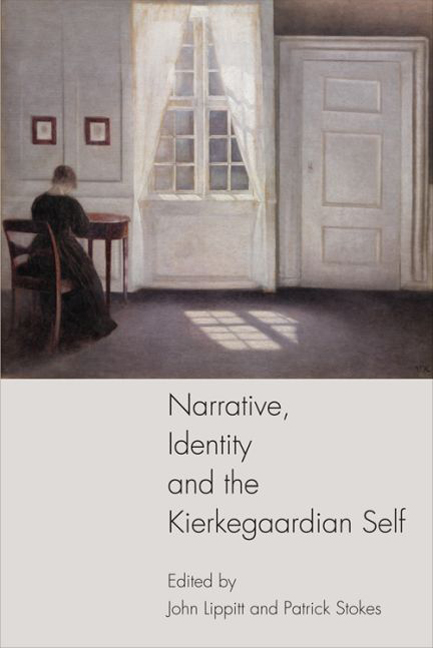Book contents
- Frontmatter
- Contents
- Acknowledgements
- Abbreviations
- Contributors
- Introduction
- 1 The Moments of a Life: On Some Similarities between Life and Literature
- 2 Teleology, Narrative and Death
- 3 Kierkegaard's Platonic Teleology
- 4 Narrative Holism and the Moment
- 5 Kierkegaard's Erotic Reduction and the Problem of Founding the Self
- 6 Narrativity and Normativity
- 7 The End in the Beginning: Eschatology in Kierkegaard's Literary Criticism
- 8 Forgiveness and the Rat Man: Kierkegaard, ‘Narrative Unity’ and ‘Wholeheartedness’ Revisited
- 9 The Virtues of Ambivalence: Wholeheartedness as Existential Telos and the Unwillable Completion of Narravives
- 10 Non-Narrative Protestant Goods: Protestant Ethics and Kierkegaardian Selfhood
- 11 Narrativity, Aspect and Selfhood
- 12 The Senses of an Ending
- 13 The End? Kierkegaard's Death and its Implications for Telling his Story
- Bibliography
- Index
2 - Teleology, Narrative and Death
Published online by Cambridge University Press: 15 September 2017
- Frontmatter
- Contents
- Acknowledgements
- Abbreviations
- Contributors
- Introduction
- 1 The Moments of a Life: On Some Similarities between Life and Literature
- 2 Teleology, Narrative and Death
- 3 Kierkegaard's Platonic Teleology
- 4 Narrative Holism and the Moment
- 5 Kierkegaard's Erotic Reduction and the Problem of Founding the Self
- 6 Narrativity and Normativity
- 7 The End in the Beginning: Eschatology in Kierkegaard's Literary Criticism
- 8 Forgiveness and the Rat Man: Kierkegaard, ‘Narrative Unity’ and ‘Wholeheartedness’ Revisited
- 9 The Virtues of Ambivalence: Wholeheartedness as Existential Telos and the Unwillable Completion of Narravives
- 10 Non-Narrative Protestant Goods: Protestant Ethics and Kierkegaardian Selfhood
- 11 Narrativity, Aspect and Selfhood
- 12 The Senses of an Ending
- 13 The End? Kierkegaard's Death and its Implications for Telling his Story
- Bibliography
- Index
Summary
I
Consider the fission problem: a single human being, A, is divided into two such humans, B and C, through teleportation, divine intervention, or some other mythical power. Both B and C are psychologically continuous with A. As the established account of personal identity would have it, psychological continuity is sufficient for personal identity. But if fission is conceptually possible, the psychologica continuity view of personal identity faces a problem: since both B and C are psychologically continuous and thus identical with A, given the transitivity of identity it must follow that B and C are identical with each other. And yet clearly they cannot be; not only are they two distinct bodies, but they are not psychologically continuous with each other! One way to attempt to circumvent this problem is by positing a teleological conception of personal identity. On such a conception, B and C are different individuals in part because, having diverged, they have different ends. Thus, B is identical with A insofar as both A and B are the same whole, whose end is the end of B. C is identical with A for the same reason. But B and C need not be identical on this account, because the identity does not hold between A and B and A and C as an identity of part to part, but rather as an identity of whole to whole in time. Similarly, my college has a single basement which serves two buildings, and thus the basement is part of each building in space without the two buildings being identical.
It may thus seem that the best way to address the problem is by switching to what is often taken as the teleological extension of the psychological continuity view – a narrative theory of identity. Such a view aims to preserve what is right about psychological continuity, its reliance on psychological rather than physical features of human beings to explain their continuity through time, while denying that persons are reducible to causal chains of psychological states, on the grounds that those states themselves have a meaning only within the wider whole that is the self.
- Type
- Chapter
- Information
- Narrative, Identity and the Kierkegaardian Self , pp. 29 - 45Publisher: Edinburgh University PressPrint publication year: 2015



